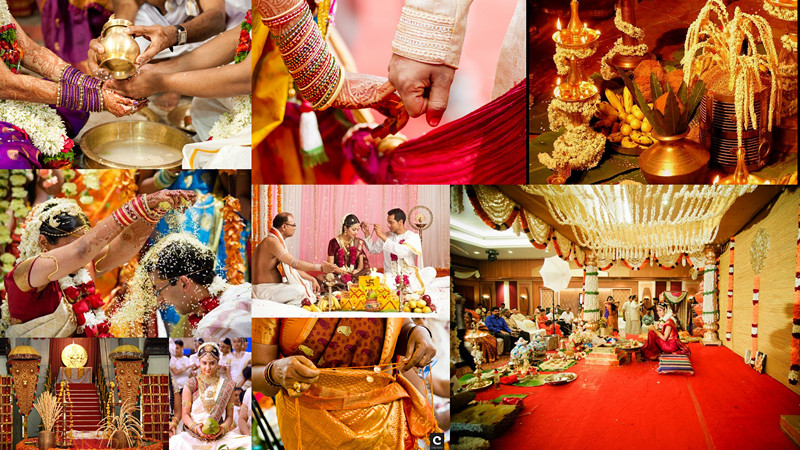Tamil Hindu Marriage, Shaadi, Wedding & Vivah
Tamil Hindu marriages are solemnized around rituals based on the Vedas. The customs are many, all holding a special meaning for the new life partners. A Tamil marriage ceremony has many layers.
Manglik Matches across all tamil caste and communities. Regular & Advance search features. Get Free profile match alerts with photos by email.
Most families firmly believe in matching the horoscopes of the life partners to be before even proceeding with the initial discussions. Once the families decide to go ahead with the wedding, they exchange a marriage agreement with ceremonial auspicious accompaniments like banana leaves.

Both families perform many rituals before the wedding. The wedding is held in the auspicious muhurtham of the morning hours. The priest seeks the approval of the parents of both the bride and the groom for them to get married. Family members crack a coconut to mark the beginning of the ceremony. They also carry the golden Thali (the sacred necklace that a bride wears to mark her marriage) to be blessed by the guests. The groom ties the Thali around the neck of his bride when he takes her to be his wife.
The D-day begins with a MangalSnanam with married women applying turmeric paste to the bride and groom. The bride performs Gauri Puja before going to the mandap.
The marriage ceremony commences with a Ganesh Puja. Both sets of parents and the priest bless the couple. There’s a very interesting ritual in a Tamil marriage. The groom, before he enters the venue, announces that he shall proceed to Kashi to become an ascetic. The bride’s father has to woo him back. This ritual is known as the ‘Kashi Yatra’.
MaalaiMaatral is the exchange of a floral garland by the bride and the groom thrice. Oonjal follows – the couple sits on a swing. The gentle sway of the swing signifies the life situations that they might face and the ceremonies performed are to bless them to tide over.
Kanyadaanam signifies the bride’s parents giving their daughter in marriage to the groom. The bride sits on the lap of her father while her parents perform the rituals. The groom ties the Thali around the bride’s neck. He ties the first two knots and his sister the third and fourth knots. The Saptapadi follow – the seven pheras around the sacred fire, signifying the seven vows of an Indian marriage. The groom then holds the left toe of the bride as she steps on a grindstone to signify the solidity of their union. It is believed that the matrimonial union begins well with the blessings of all elders and the almighty.
 Contact Prospective Manglik Brides & Grooms.
Contact Prospective Manglik Brides & Grooms.

